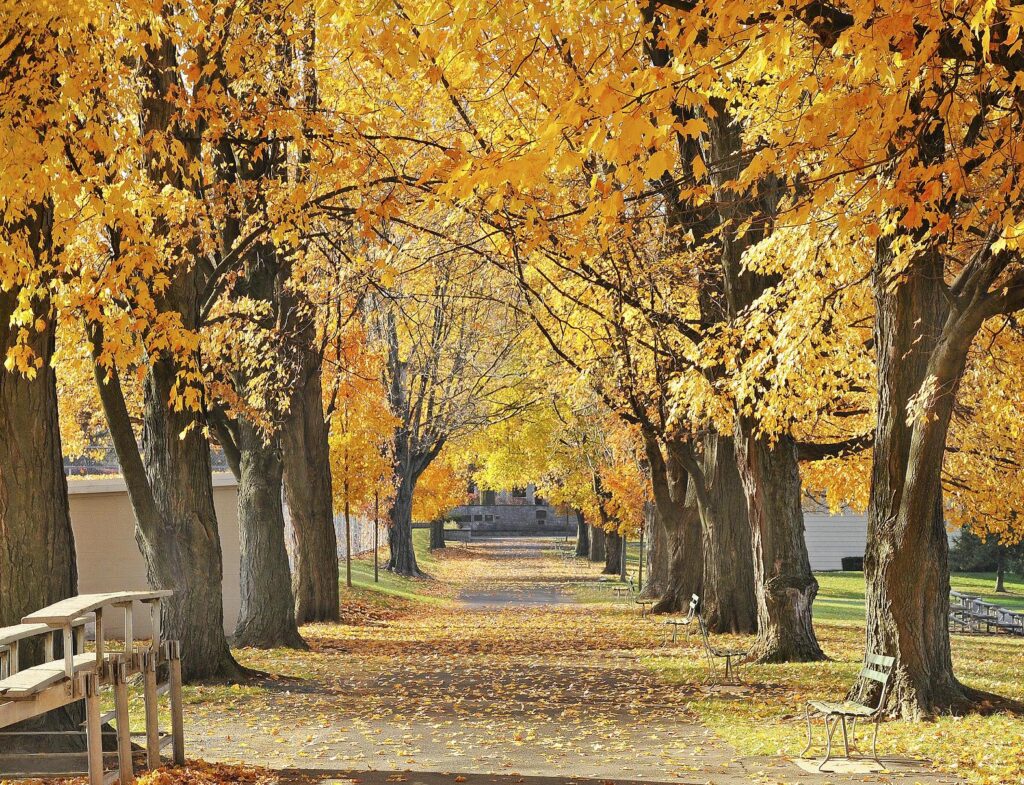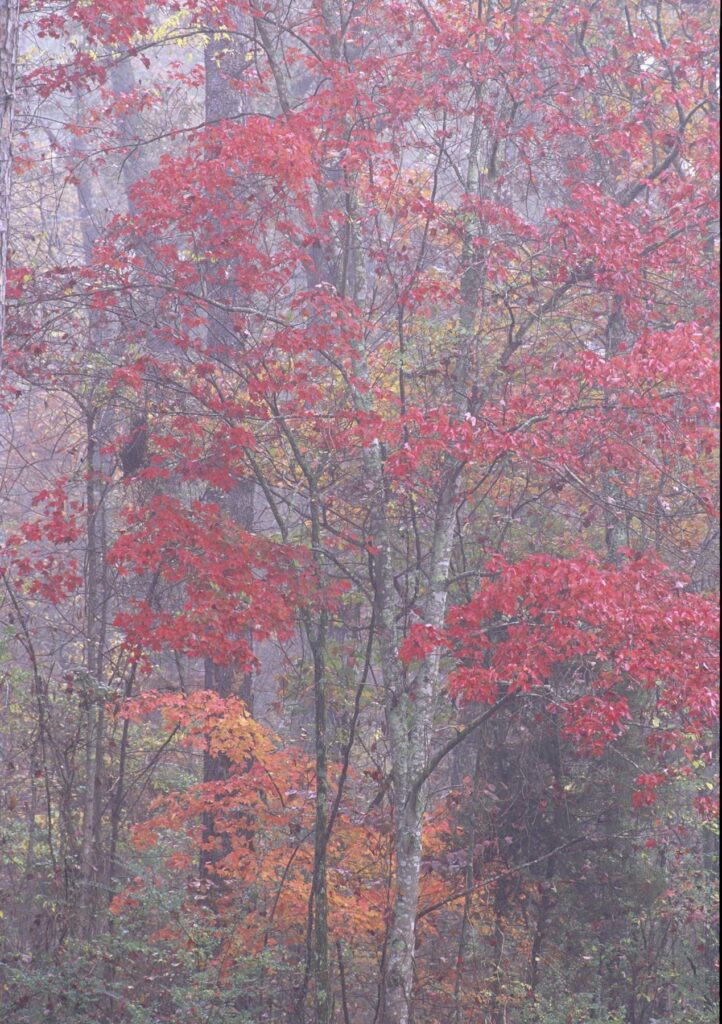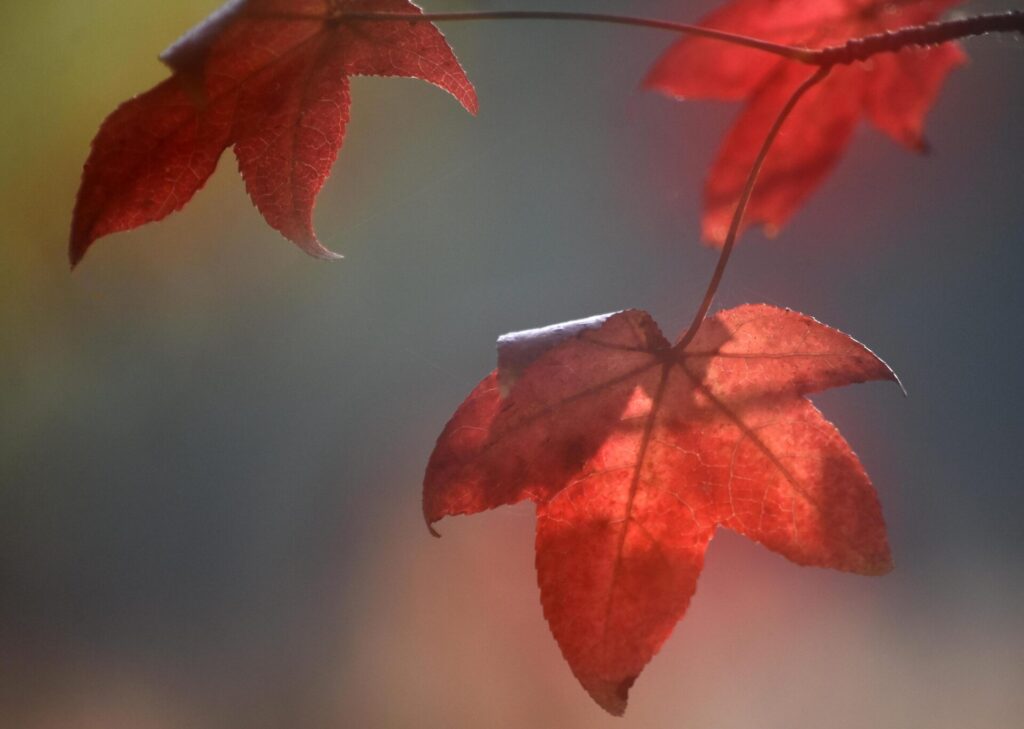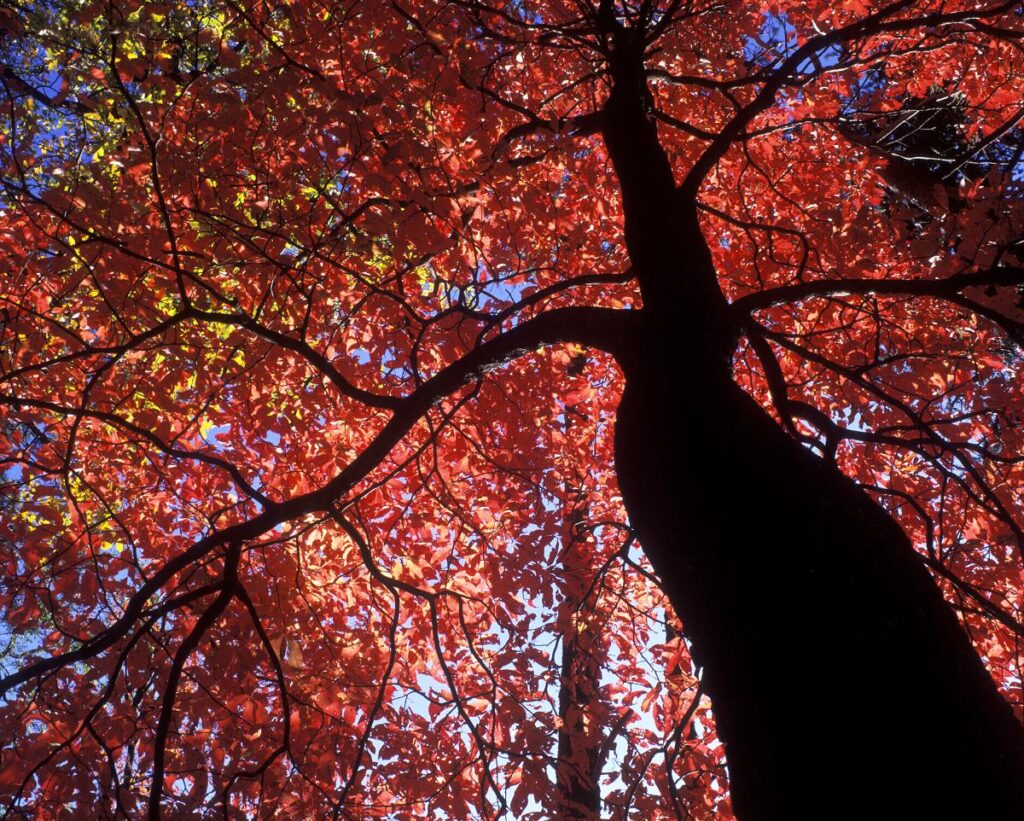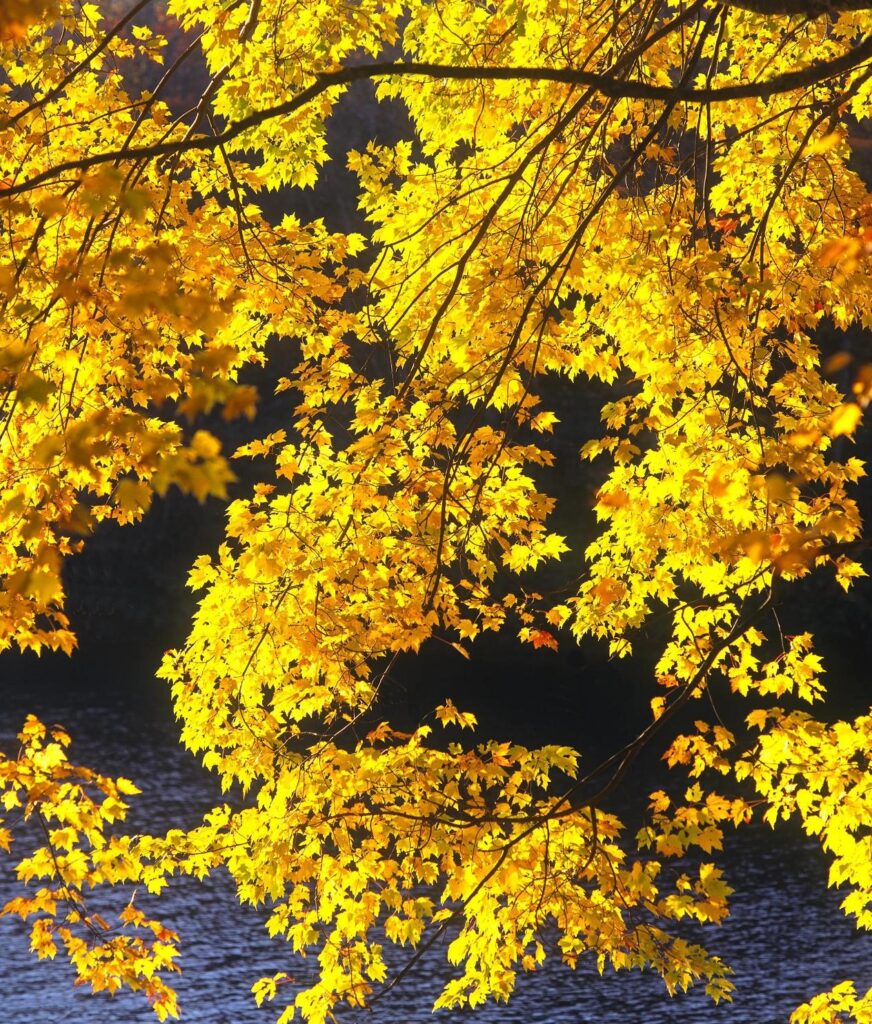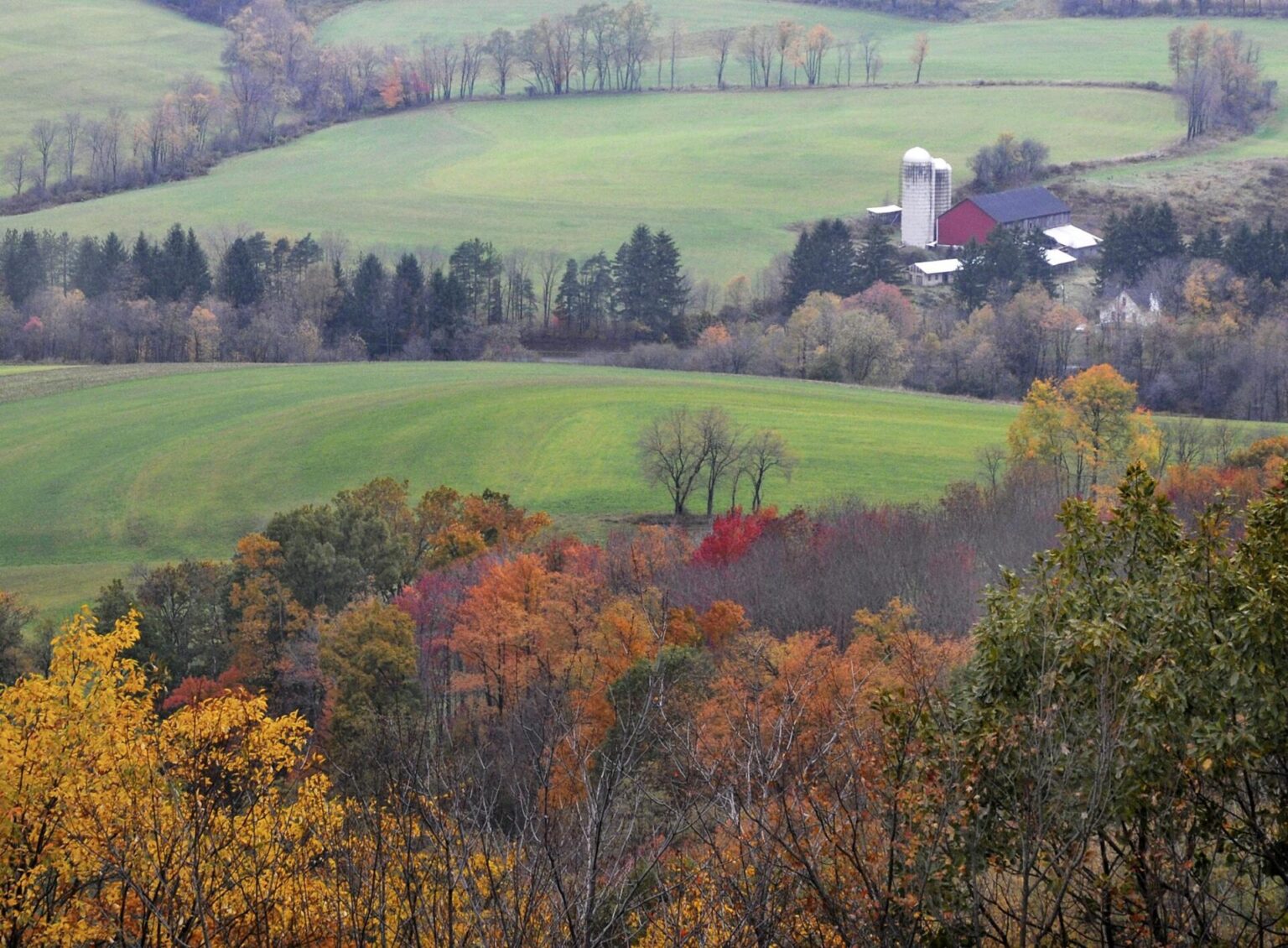October has arrived and during this month the annual hunt commences for autumn trees’ most vibrant reds, fiery oranges, and bright yellows. Pennsylvania groundhog Punxsutawney Phil only makes winter predictions. So, we humans must ponder the yearly why-when-what-where questions for how to best pursue this fall spectacle. The first answer of that four-part W-series is the easiest- it’s based on scientific facts. The when-what-where questions are more elusive and ultimately decided by intangible meteorological/topographical conditions and individual preferences.


WHY do leaves change color? In fact, they don’t really change. Around this time of year, deciduous trees cease chlorophyll production, in preparation for winter dormancy. When this process concludes, the dominant green chlorophyll hue fades away, revealing a tree species latent pigment. Unlike Halloween, when humans mask up to hide their identities, trees do the opposite- they unmask true colors during fall.
WHEN will the peak color occur? The usual period is the last third of October around the Mason-Dixon line- but that is at best a guestimate. Often, when warmer than normal daytime temps prevail, it will push peak leaf season toward October’s end and into November. Local weather- both recent past and near future- will greatly determine this year’s timing.
Other factors in play are elevation (the higher the location, the earlier peak color will occur), and the types of tree species prevalent in a particular area. Maple trees are considered the apex color species for backyards and parks, while various species of forest oaks are less consistent with their autumn coloration. Many color-coded maps are available online that chart the leaf season’s progression based on these weather, terrain, and species factors.
How vivid will the color be this year? Predicting fall brilliance for a single location in any particular year is an inexact science. Too wet of a spring, or too dry of a summer can make fall leaves appear drab. But sunny October days and clear cool nights are thought to increase the chances for spectacular leaf showings.

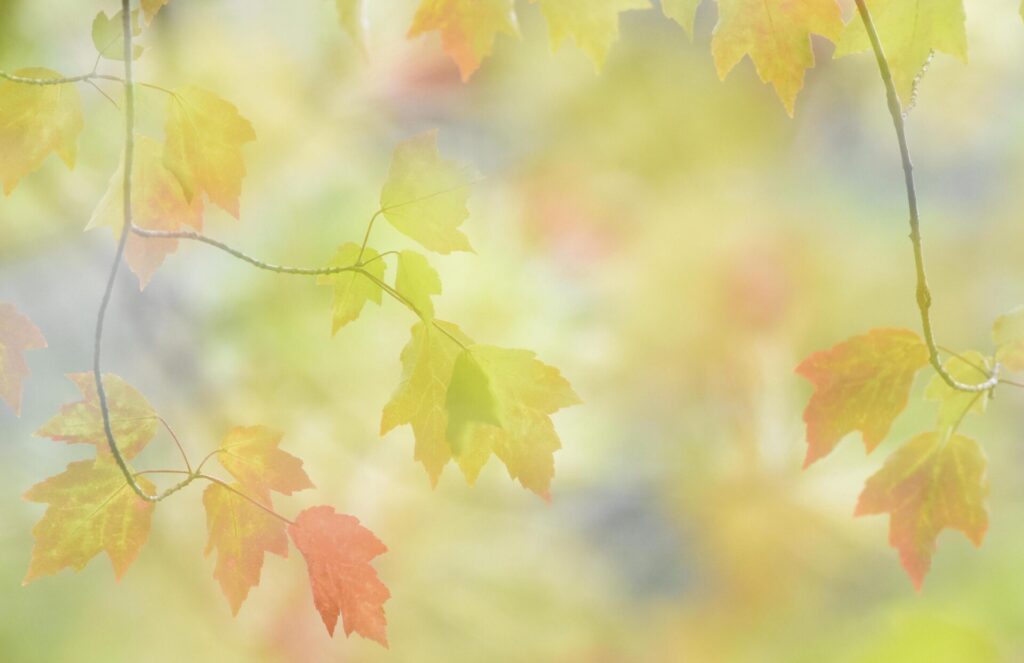
Right now in Southern Pennsylvania and Northern Maryland, a few dogwoods have turned red and random individual trees have slightly altered, but mostly the local landscape has retained its summertime appearance. Peak color is still weeks away, so there’s plenty of time to plot strategy.
WHAT is the best plan to maximize the fall leaf experience? There are many options. The first armchair approach is simple: let autumn color come to you. If plans don’t involve traveling far from home, a quick look out the window will provide visual clues. When the time is right, a spontaneous stroll through a local park or trail will work fine. In Franklin County, Renfrew Park is a premier place to roam. In Washington County, the C&O Canal towpath offers a flat path along the scenic Potomac River.
For those with more time, and a yearning to explore further, a few hours’ drive will greatly expand leaf viewing options. This strategy can also stretch the peak period from several days to a few weeks. If you’re anxious to see fall color sooner, the best advice in Pennsylvania is to travel north. In Maryland, go west.
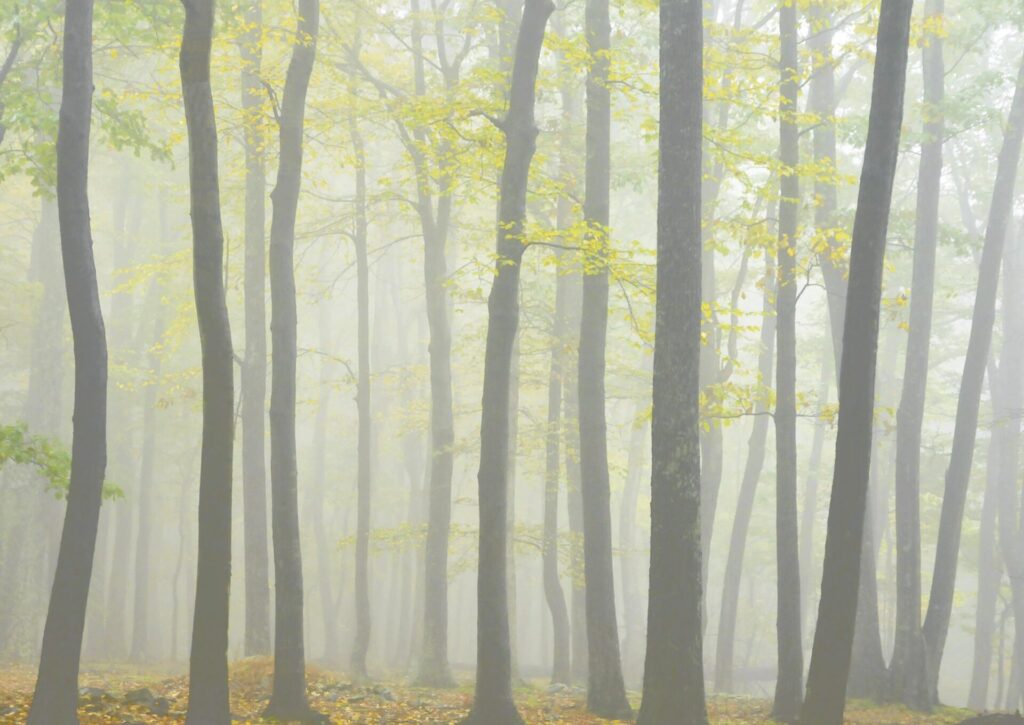
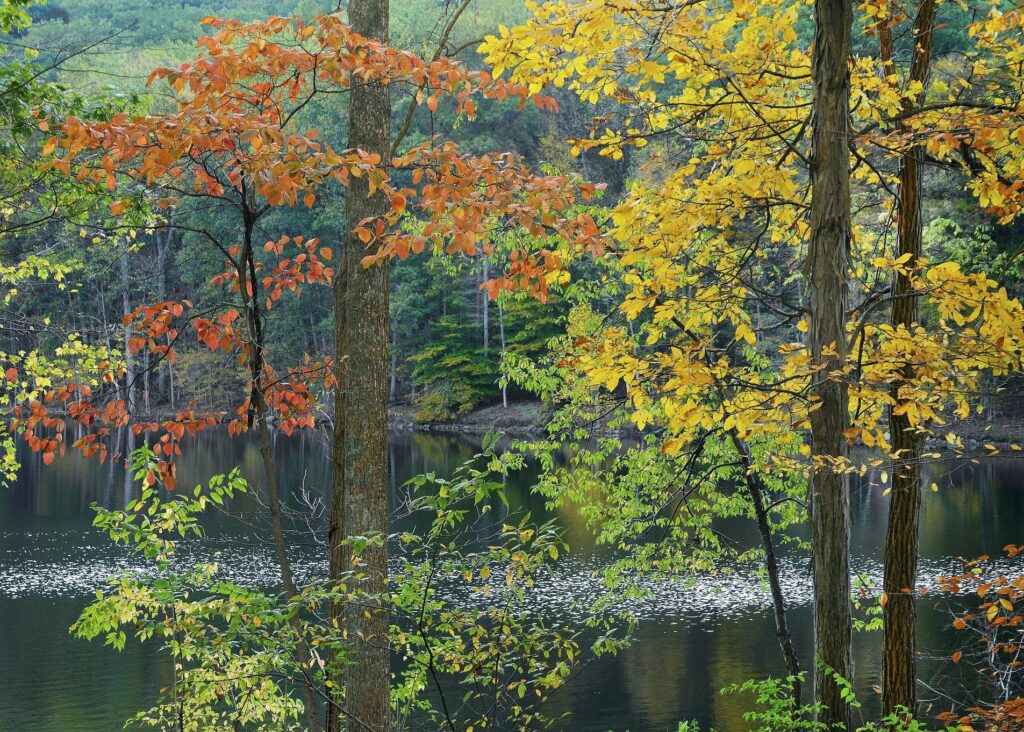
If you procrastinate and miss out on your local peak spots, there are natural locations further south in West Virginia and Virginia that will have color well into November. Travel to lower-lying areas (the Chesapeake Bay region) or urban environments with slightly warmer climates (Washington or Baltimore) is also a sound plan toward season’s end.
WHERE is the best place to go to see autumn at its finest? A first suggestion would be an obvious one- go where a multitude of tree species grow. State Forests like nearby Michaux in Pennsylvania and Garrett State Forest further afield in western Maryland are scenic places to explore.
Both states also have excellent State Park systems that offer camping, boating or picnicking options. Pennsylvania’s Caledonia State Park in Fayetteville and Maryland’s Cunningham Falls and Greenbriar State Parks (as well as nearby Catoctin National Park) are excellent choices. As a bonus, you’ll likely see impressive roadside tree specimens and glimpses of native wildlife while driving to these parks.
Another option is exploring backcountry roads. A grove or even a single autumn tree can make any scene memorable. The area is crossed by quaint country byways with nostalgic barns and rustic stone bridges. Unpaved Forest Service roads around Mont Alto and South Mountain are normally in a hard-packed condition and safe to navigate.
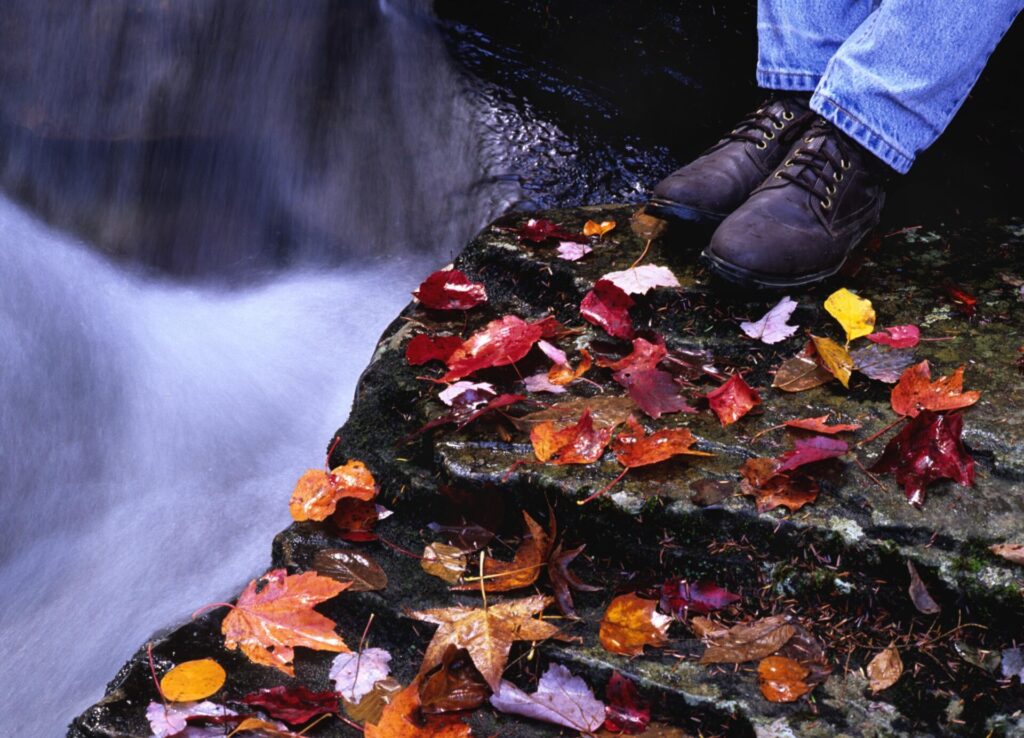
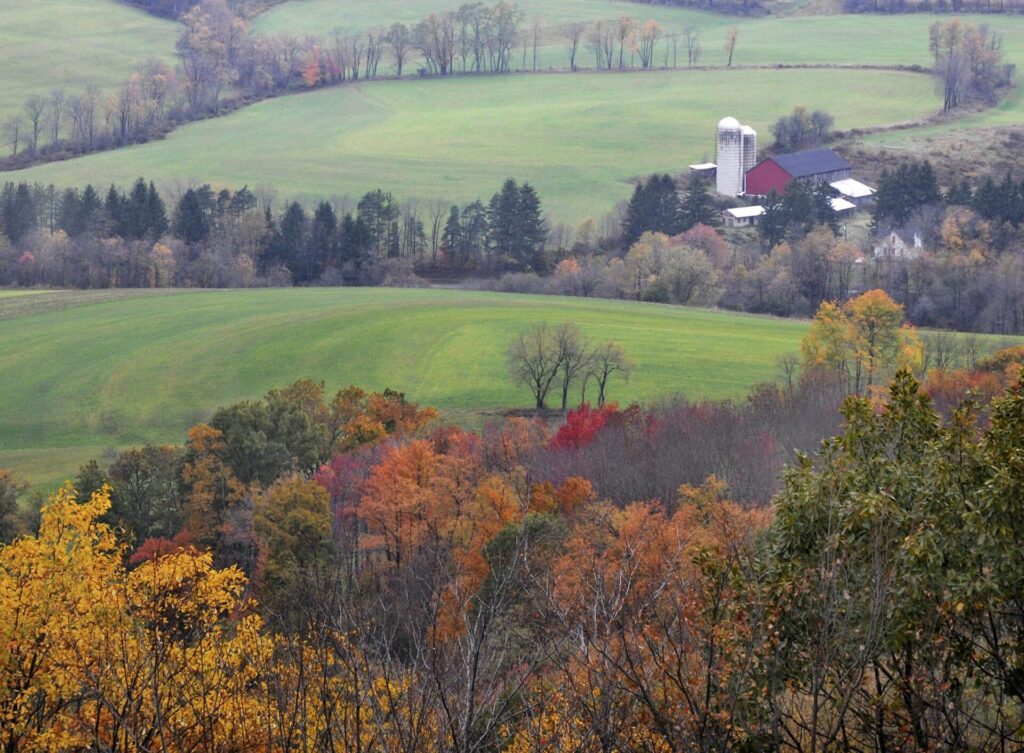
Also remember that nature regularly provides favorable lighting conditions near sunrise and sunset- spotlighting or backlighting leaves to give them a memorable glow. If you’re near water, look for autumn reflections. For hikers or backpackers, the Appalachian Trail is a national treasure with overlooks providing panoramic vistas.
Old-fashioned paper maps sometimes highlight local scenic drives, so don’t ignore ancient technology. Many local and county organizations have websites promoting their events that also provide updates on fall color. Pick a destination and explore options. These sites are designed to entice travelers, so take any promises for guaranteed fall radiance with a grain of salt.
While sunny October days make pleasant road trip conditions, venturing out after a rain shower has benefits too. Wet leaves have increased saturation that intensifies their color. At season’s end, don’t delay a leaf excursion since a single storm packing high winds or heavy rain can knock leaves to the ground quickly.
Above all, appreciate each fall experience as it happens. Whether you enjoy autumn in your backyard or a remote mountain trail, each October is like an individual leaf- fleeting in its color, mysterious in its yearly cycle, and a unique delight for anyone who appreciates nature’s splendor.
